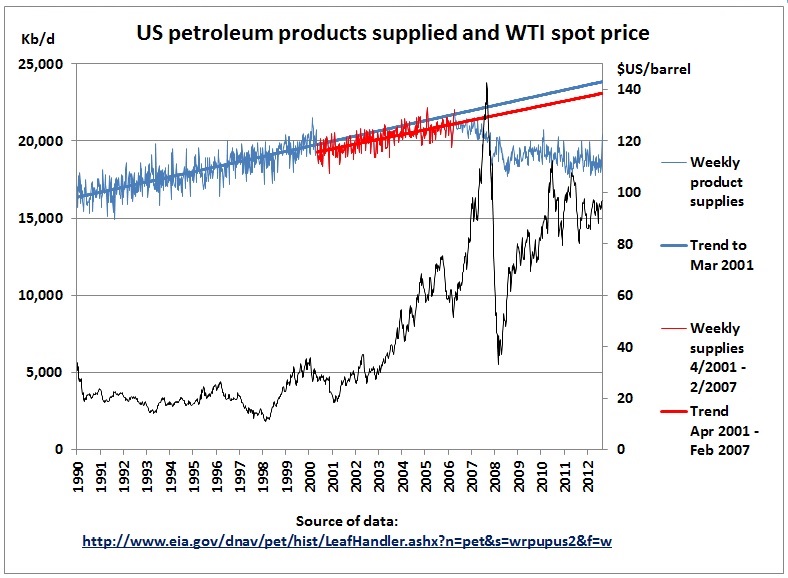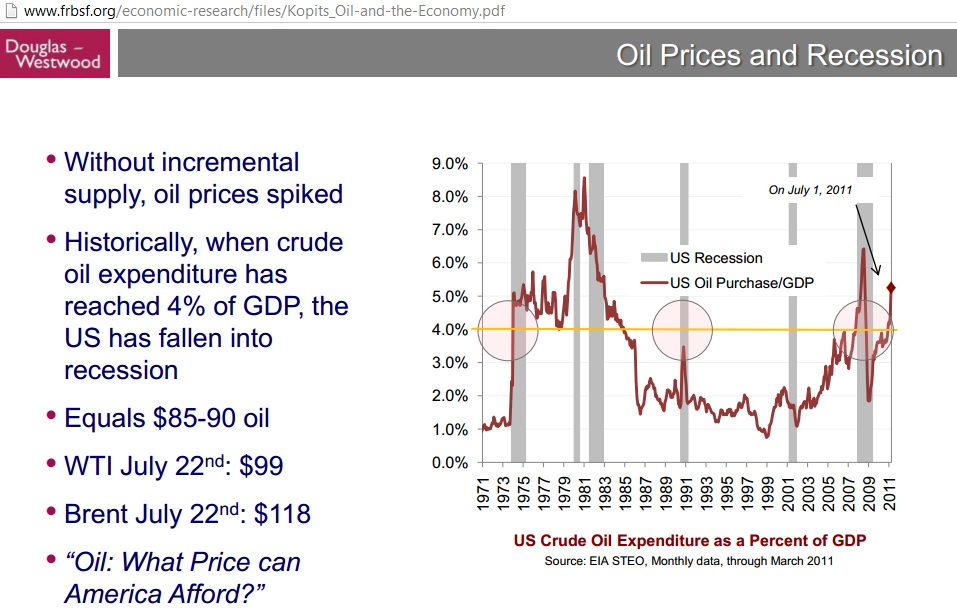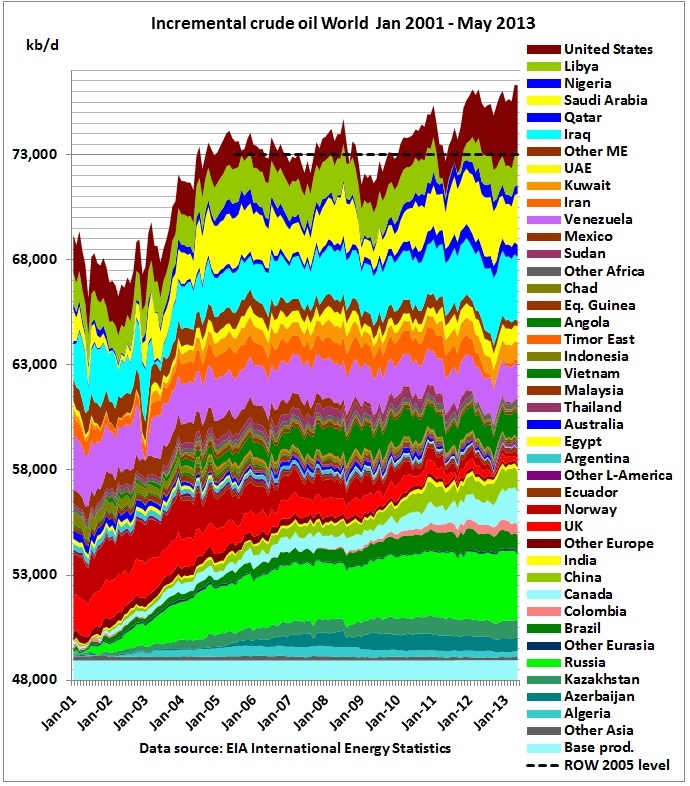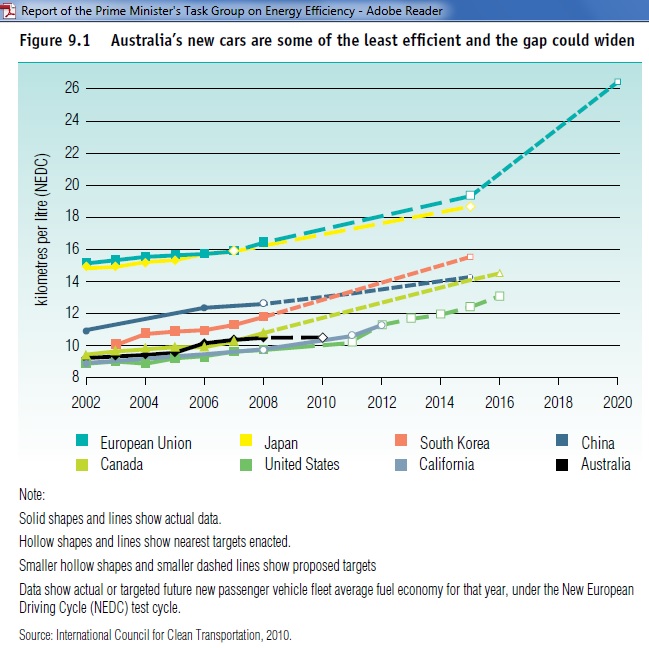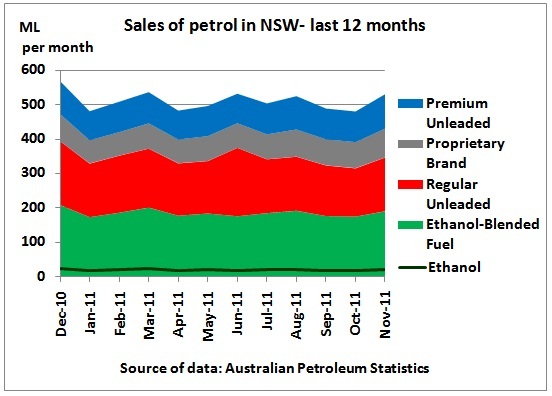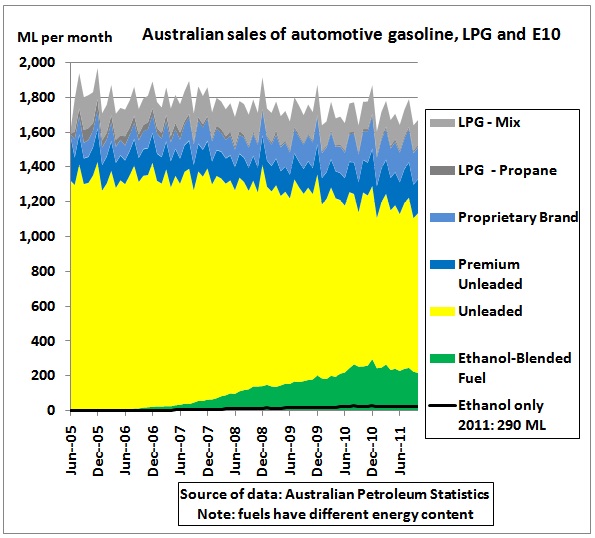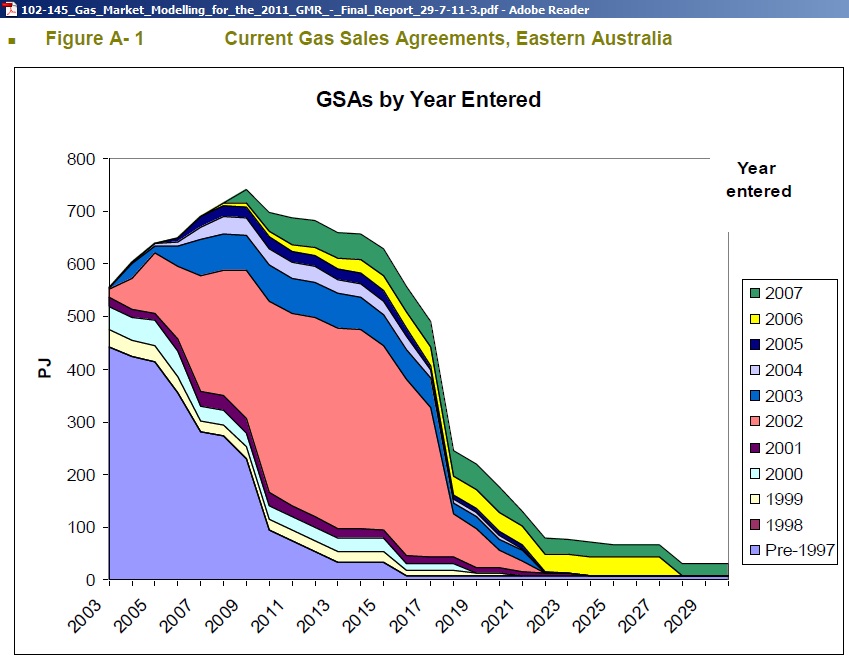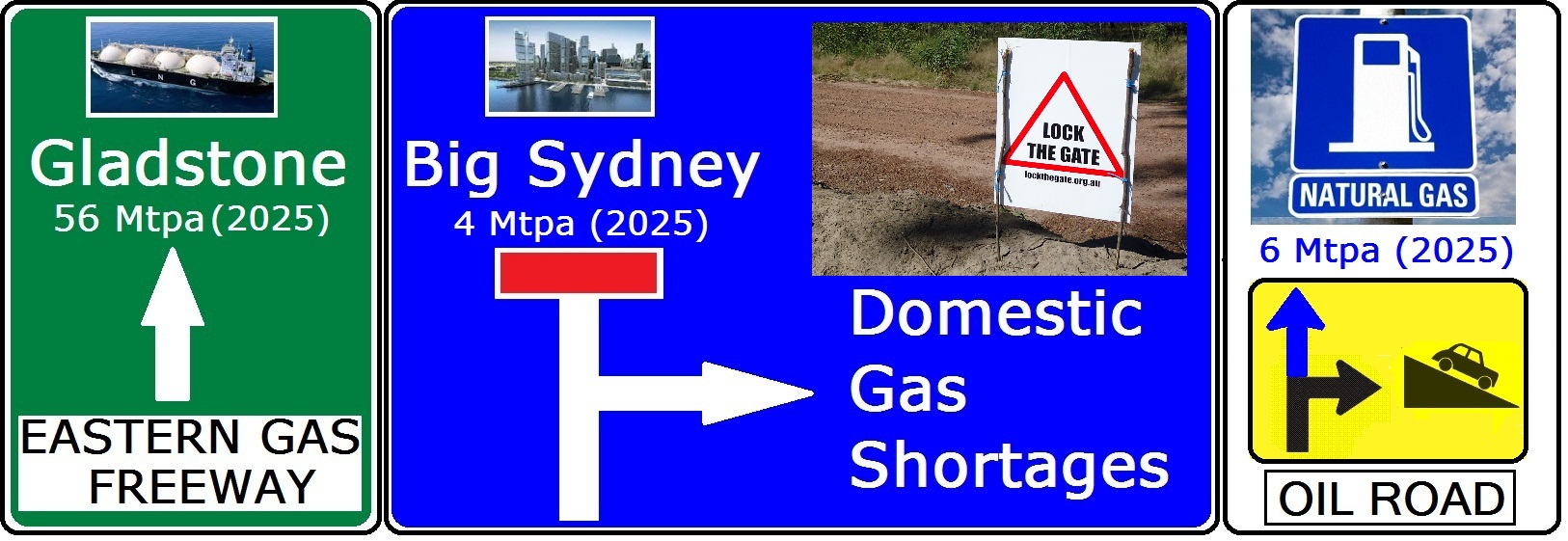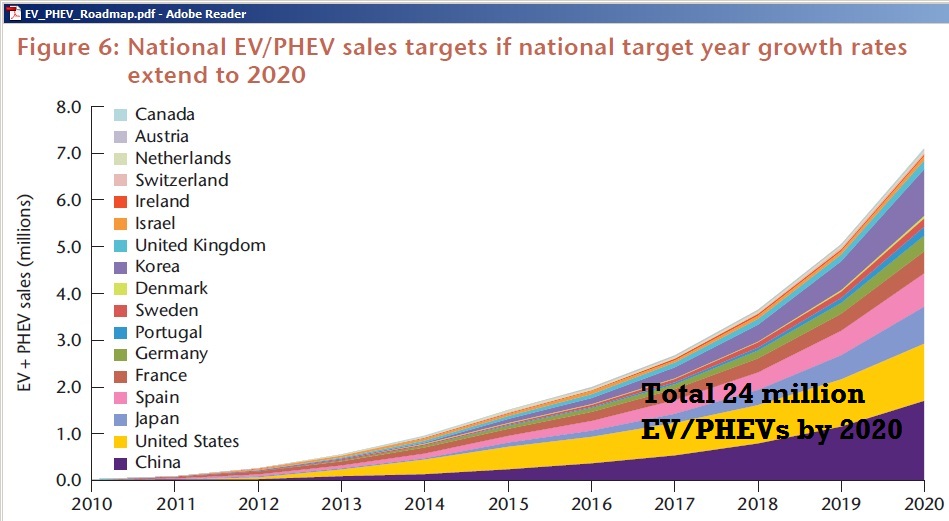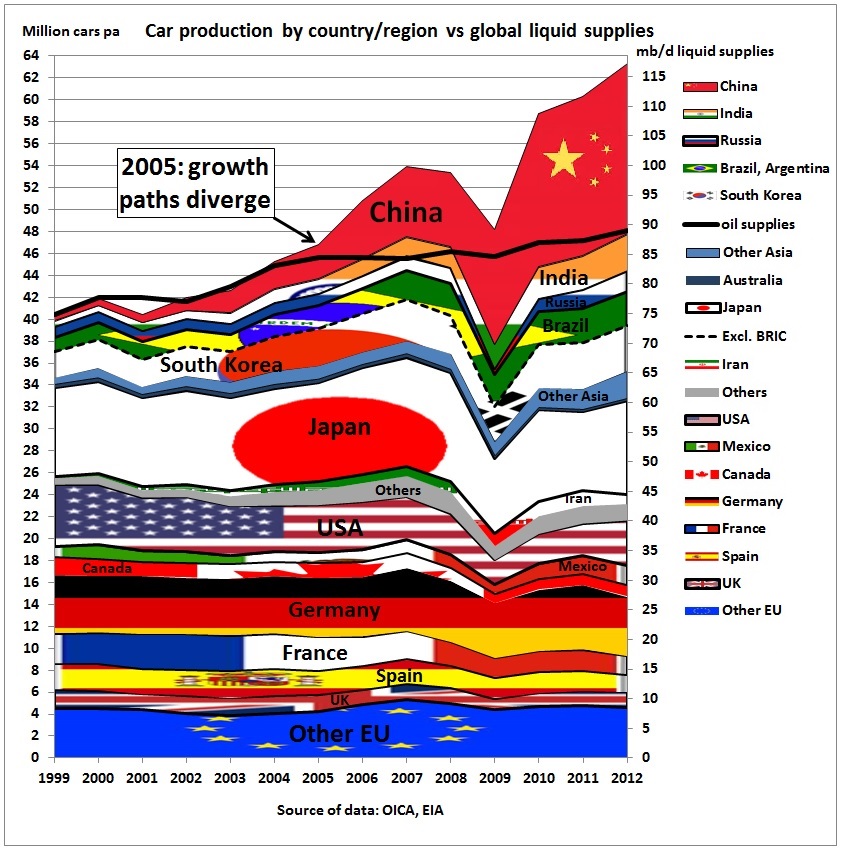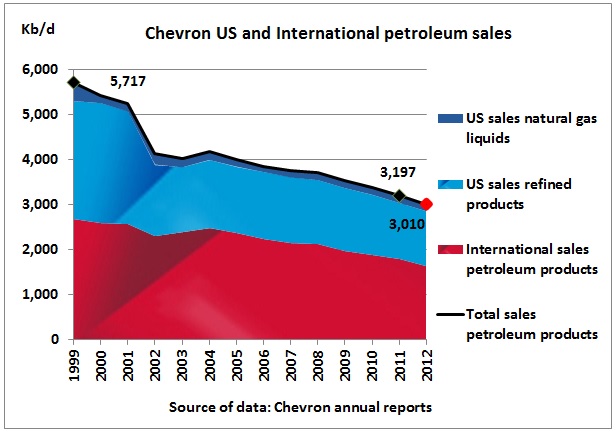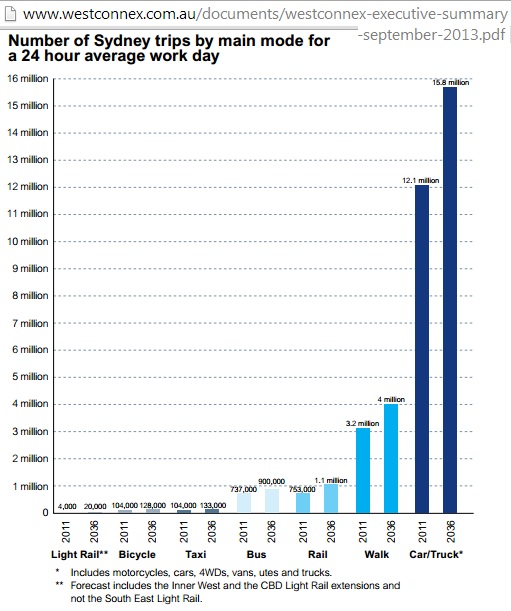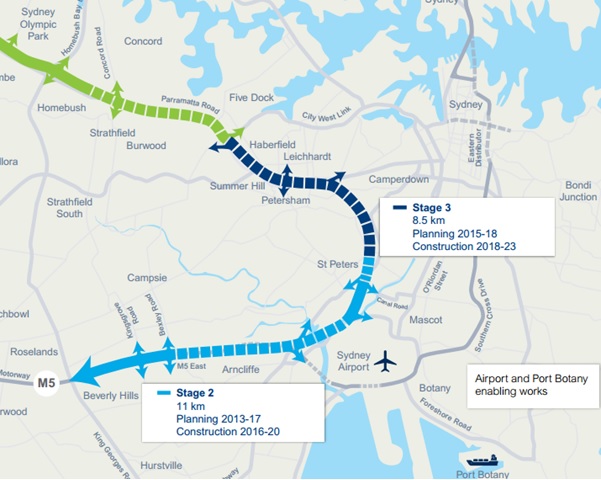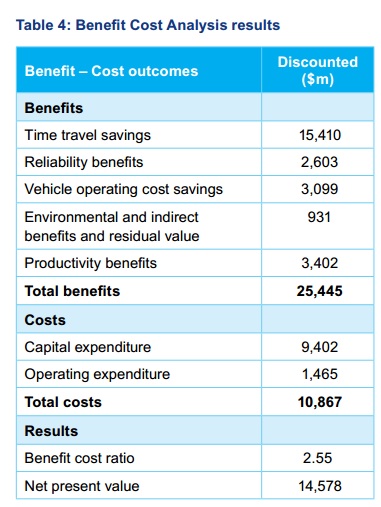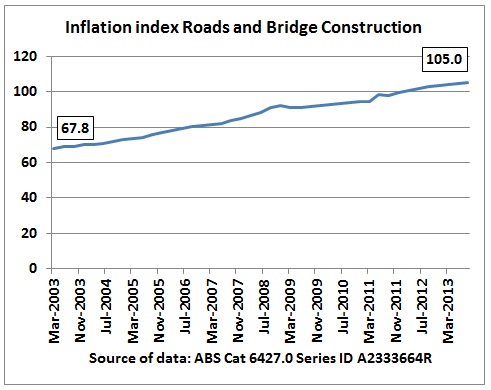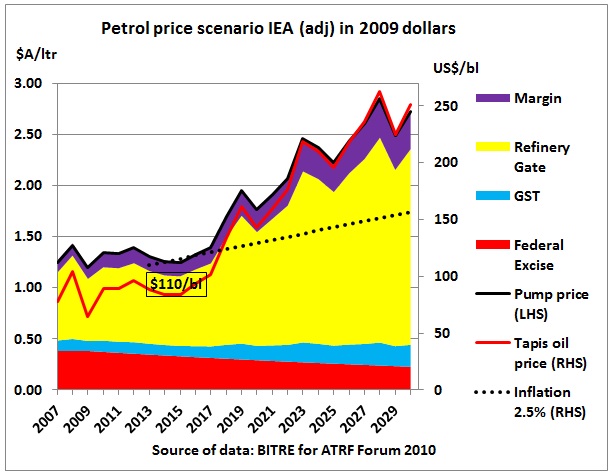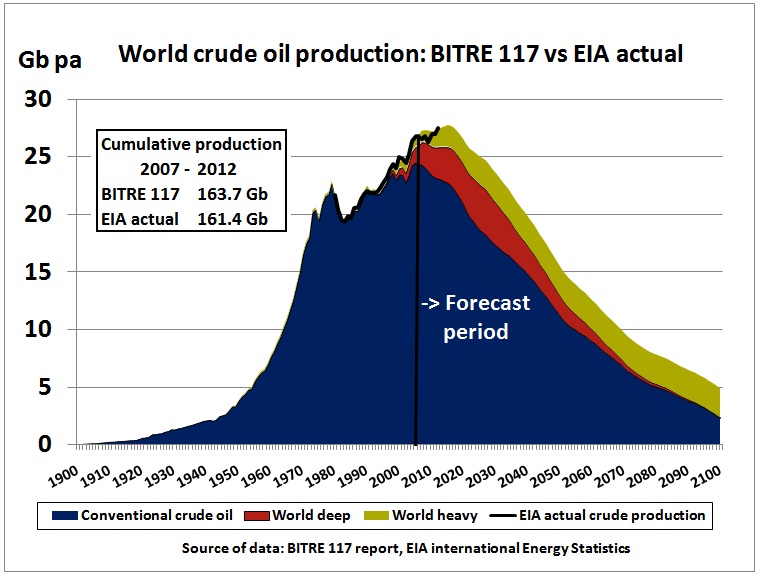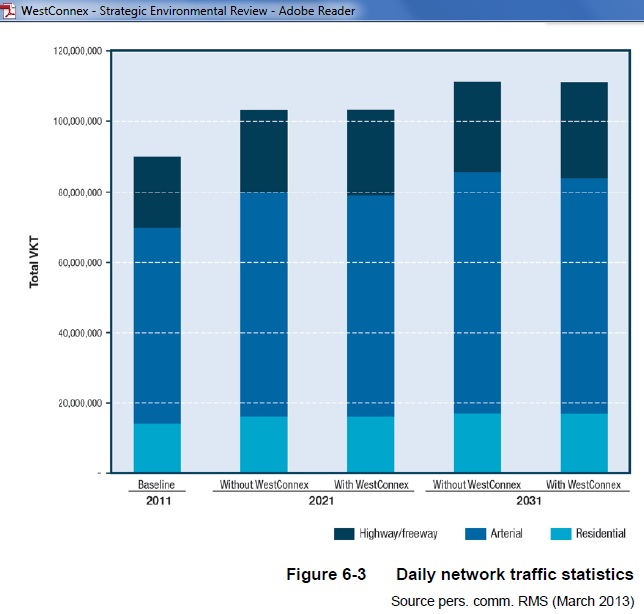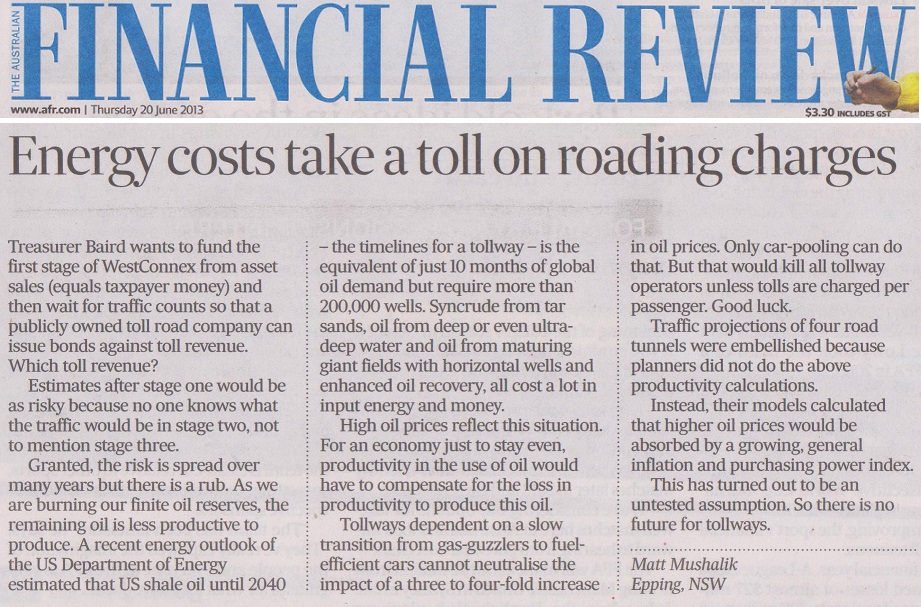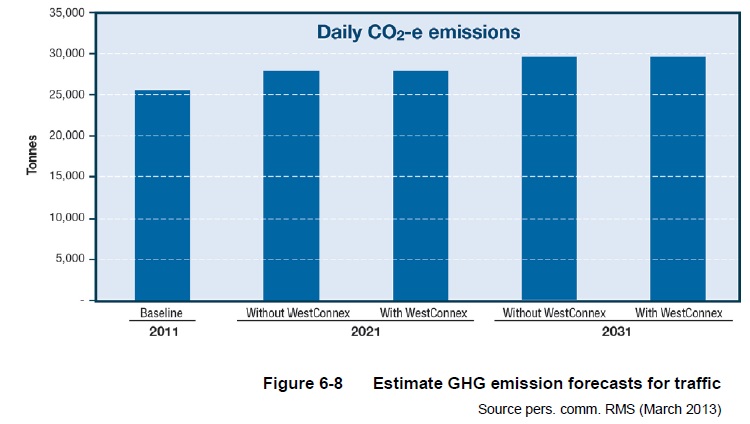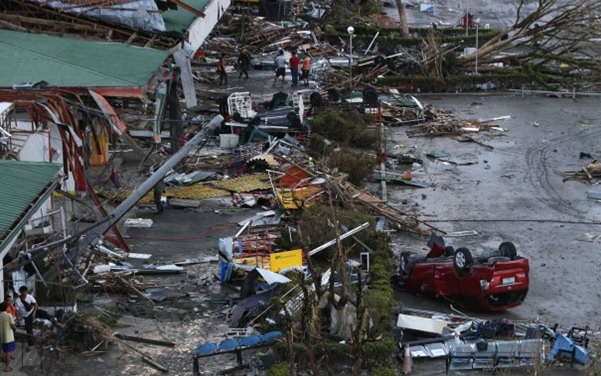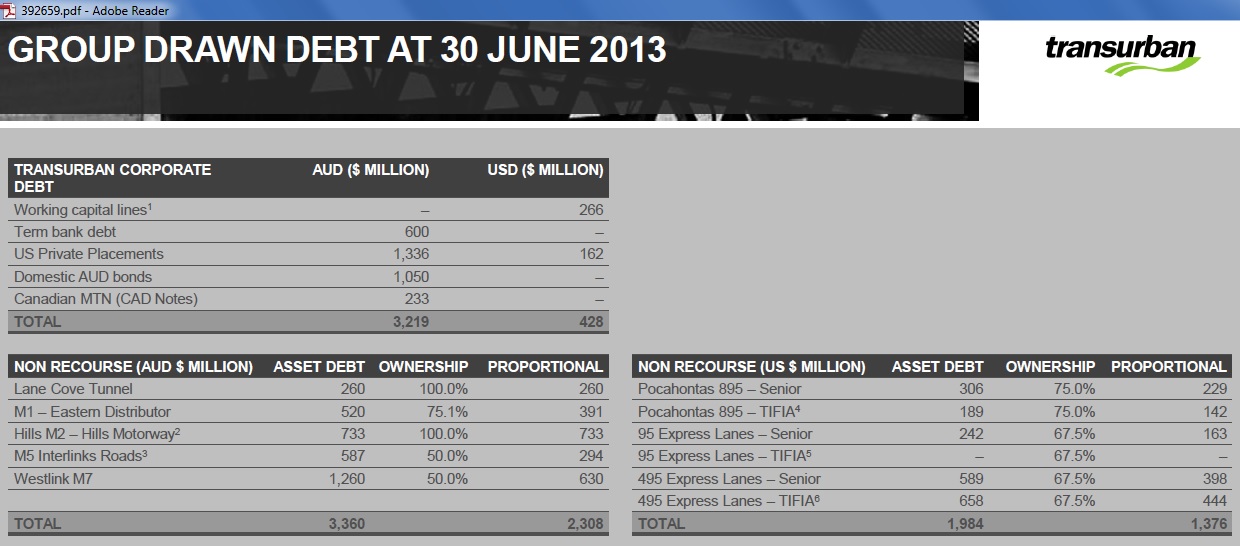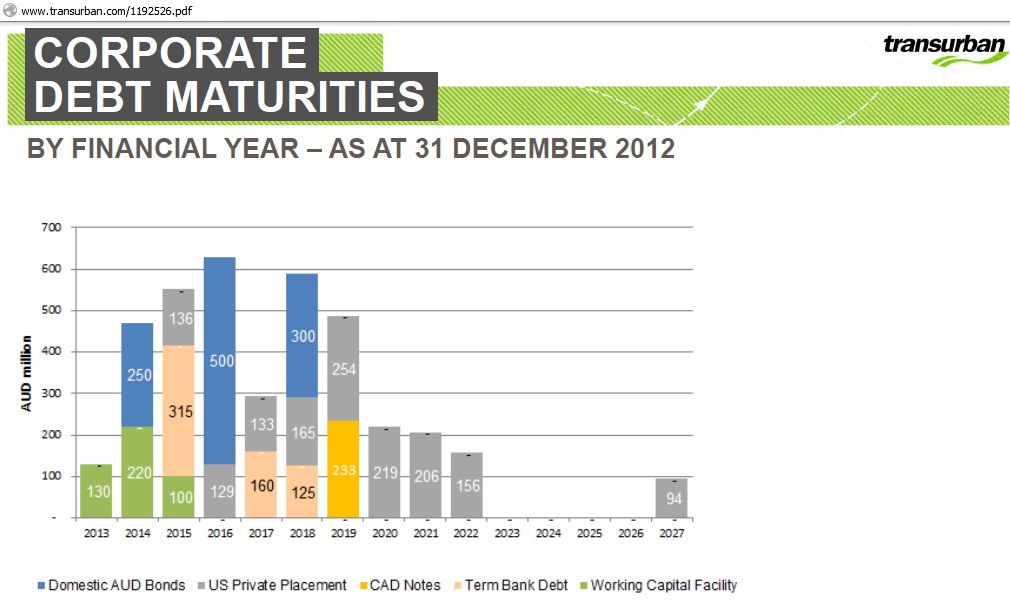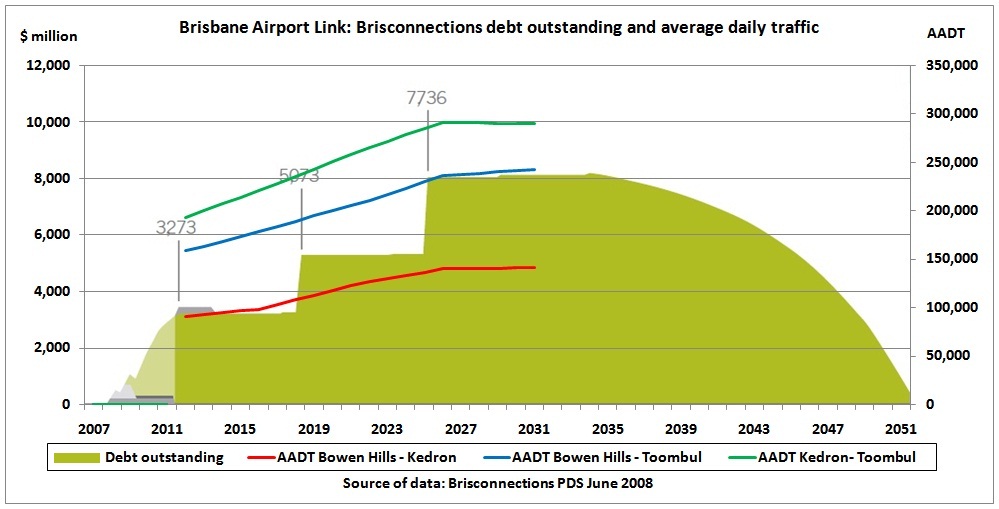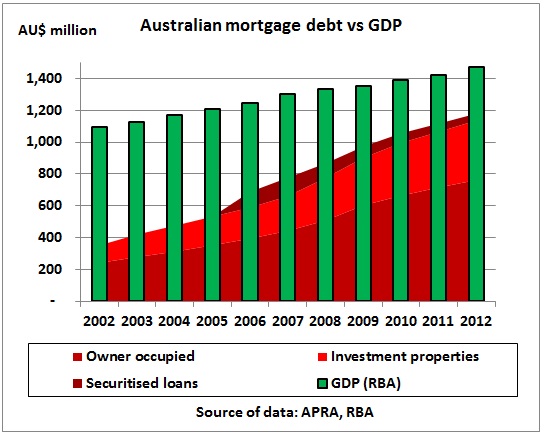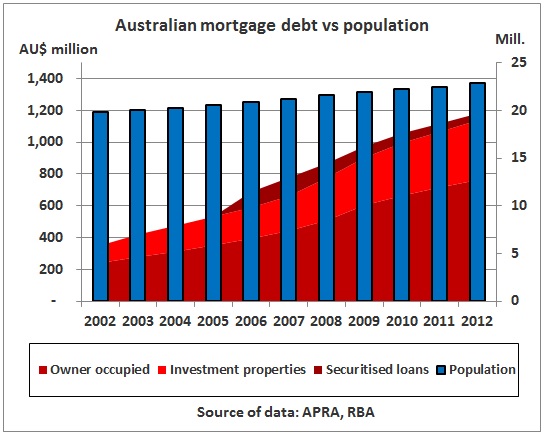Westconnex is claimed to become the “biggest infrastructure project in Australia” which must make sense at least until 2053, 30 years after its planned completion. Governments and financial institutions assume that for the whole of this period:
- there are sufficient and affordable oil supplies globally and of course for Australia
- there is no oil war in the Middle East
- Asia, China in particular, can import the required quantities of oil to grow their economies on which Australia’s prosperity depends
- Australian gas – which has already been locked away in long-term export contracts – can be used domestically as alternative transport fuel
- Bushfires, floods and storms will not get worse so that we can continue burning fossil fuels like in the past
- there is a smooth transition to renewable energies for vehicles, including electric cars and alternative fuels for trucks
- motorists will accept tolls sufficiently high enough to pay back all toll-way debt within 20-25 years
- the continuing financial crisis remains manageable and tollway debt can always be rolled over before it is finally paid back
- there will be no natural gas shortages in Sydney and the Metropolitan Strategy can be implemented
- all housing projects planned in the Westconnex catchment area, particularly along Parramatta Rd do go ahead despite Australian mortgage debt already at 80% of GDP
- Sydney’s hot summers in the West – the driver for Westconnex – will not get worse, allowing a comfortable environment for a substantial increase in population there.
- overseas immigration will continue in periods of fuel, energy and water shortages
- the economy grows perpetually at historic rates with increasing economic activities and traffic at Sydney airport and Port Botany
The business case so far does not provide any documentary evidence on the above assumptions. Nor is it likely they will be tested via the terms of reference for the EIS (Environmental Impact Study)
No oil or energy calculations
“Energy prices/peak oil.
While the prospect of peak oil is emerging (2.1), vehicle technologies are rapidly progressing (2.2) with vehicles powered by alternative energy predicted to reach mass market production in the foreseeable future (2.3). While this may shift demand away from fossil fuels (2.4), it is unlikely that the demand for travel will reduce sufficiently as consumers adapt to alternatives and hence travel demand on our major road network is likely to remain (2.5).” p 40
http://www.westconnex.com.au/documents/westconnex-strategic-environmental-review-2013.pdf
(2.1) Peak oil is a process which started in 2005,
22/7/2013 US oil demand peak was in 2007
http://crudeoilpeak.info/us-oil-demand-peak-was-in-2007
http://www.frbsf.org/economic-research/files/Kopits_Oil-and-the-Economy.pdf
The response to the conventional oil peak in 2006 was to develop non-conventional oil (shale oil, syn-crude from tar sands and heavy oil) and to print money (Quantitative Easing) so that the economy can afford those high oil prices.
This graph shows that the world outside the US could not increase crude oil production since 2005. More details are in this post:
11/9/2013 US shale oil hides crude oil peak in rest of world
http://crudeoilpeak.info/us-shale-oil-hides-crude-oil-peak-in-rest-of-world
(2.2) Vehicle technologies are NOT rapidly progressing in Australia
From the following graph in the report of the Prime Minister’s Task Group on Energy Efficiency (July 2010), p. 127 it can be seen that the energy efficiency of Australia’s new cars is not improving much.
Needless to say, the Australian car industry is struggling to survive. Why? Even the Federal Industry Minister has understood:
“I put in the money on the basis that they produced a car that Australians want to buy. The reality is that Australians aren’t buying that car”
http://www.abc.net.au/news/2013-09-19/industry-minister-admits-car-industry-on-the-brink/4968786?section=business
(2.3) Vehicles using alternative energies are NOT reaching mass production in the foreseeable future
Let’s take ethanol:
Ethanol has a negligible impact on total energy contained in petrol
30/1/2012 Ethanol blended E10 would take 14 years to replace ULP in Australia
http://crudeoilpeak.info/ethanol-blended-e10-would-take-14-years-to-replace-ulp-in-australia
The following bio-mass study from 2009 has calculated that 50 million of deep-rooted wood-land is needed to transform the Australian economy away from fossil fuels (provided of course there is sufficient rainfall and no destruction by bush fires)
Powerful Choices: transition to a biofuel economy in Australia
by Barney Foran
The Powerful Choices study uses a biophysical-economics model of the Australian economy to explore the capability of discrete low-carbon technologies to maintain economic growth, ensure energy security and reduce CO2 emissions out to 2051. The approach applies physical laws of thermodynamics and mass balance to established economic structures to ensure that financial dynamics are constrained by physical reality. Renewable electricity (bio-electricity, wind, solar thermal and solar photovoltaics) and advanced fossil electricity (high efficiency generators, carbon sequestration and storage, nuclear) are examined alone and in various combinations. Alternative transport fuel cycles are explored through renewable fuels (bio-methanol and bio-ethanol) and fossil-based oil replacements (compressed natural gas and shale oil). http://lwa.gov.au/products/pn30178
That natural gas is, however, exported in quantities equivalent in energy content to all Australian, petroleum based fuel consumption.
9/5/2012 Queensland plans to export more than 10 times the gas NSW needs (part 3)
http://crudeoilpeak.info/queensland-plans-to-export-more-than-10-times-the-gas-nsw-needs-part-3
6/5/2012 Howard’s wrong decisions on offshore gas exports start to hit transport sector now
http://crudeoilpeak.info/howards-wrong-decisions-on-offshore-gas-exports-start-to-hit-transport-sector-now
Big Sydney, big problem
13/10/2011 NSW gas as transport fuel. Where are the plans?
http://crudeoilpeak.info/nsw-gas-as-transport-fuel-where-are-the-plans
11/10/2011 Australia’s natural gas squandered in LNG exports
http://crudeoilpeak.info/australias-natural-gas-squandered-in-lng-exports
As these gas export contracts are long-term commitments, Australia has effectively blocked its own path to use gas as transport fuel in quantities which would make any difference.
Electric vehicles
In 2009, the IEA has compiled all EV plans around the world and calculated that by 2020 there might be 24 million electric and plug-in hybrid electric vehicles on the road, world wide:
http://www.iea.org/publications/freepublications/publication/name,3851,en.html
This would only be 2.4% of the 2011 fleet of 1 billion. More details are in this article:
31/8/2011 1 billion vehicles in year #7 of peak oil
http://crudeoilpeak.info/1-billion-vehicles-in-year-7-of-peak-oil
And whether these plans actually materialize is in doubt. Tesla is selling only 5,500 cars per quarter:
6/11/2013
DETROIT — Electric car maker Tesla Motors is posting third-quarter results well below Wall Street expectations.
http://abclocal.go.com/wabc/story?section=news/business&id=9315516
(2.4) There is NO shift away from fossil fuels
In fact, the opposite of what is claimed in the Westconnex document is happening. The oil industry tells the public that shale oil has solved the problem of peak oil so no attempts are being made to get away from oil. The result is:
27 May 2013 World car production grows 3 times faster than global oil supplies
http://crudeoilpeak.info/world-car-production-grows-3-times-faster-than-global-oil-supplies
However, a shift away from oil will be forced upon motorists as, for example, refineries are closing
27/7/2012
After Sydney’s refinery closure: Caltex to import fuel from Chevron’s shrinking sales
http://crudeoilpeak.info/after-sydney-refinery-closure-caltex-to-import-fuel-from-chevrons-shrinking-sales
(2.5) Travel demand is indeed quite inelastic due to the inefficient city structure of Sydney, requiring long distance commuting by car.
Conclusion:
Westconnex planners do not understand the ongoing process of peak oil. No quantitative evidence and timelines (“foreseeable future”) have been presented on alternative fuels and energies, whether fossil fuel based or from renewables. The statement is wishful thinking and on the level of a year 10 essay, not the basis for a multi-billion dollar project with a life span of several decades. It is likely that the government does not want to know any details on this critical subject. That of course will backfire.
No proper traffic projections
The documentation does not contain any Westconnex-specific traffic projections for the period necessary to be considered for such a project which would normally be 30 years from the year of completion
We only get the above numbers for the whole of Sydney, a 30% increase over 25 years or 1.2% pa. Needless to say this increase has not been compared with available oil and/or energy supplies.
Note that the Business Case Executive Summary in chapter 4.31 highlights 9 new light rail stations (not part of Westconnex) and 10 km bus lanes. Compare that to the number of trips by light rail and bus envisaged in the transport plan and it is clear how negligible this contribution is planned to be.
When we look at the loop-type alignment it is no surprise that traffic projections were not published. While the documentation claims that “WestConnex will link Sydney’s west and south west with the city, airport and port for the first time in a 33 km continuous motorway that is free of traffic lights” this motorway neither reaches the city (CBD) nor Port Botany. The proper way to access the CBD is of course by public transport.
The reason for this merry-go-round is of course that if the motorway “ended” somewhere closer to the city the road network could not absorb the total traffic flow because the parking isn’t there and too expensive anyway. Except for the exit at Camperdown, Westconnex is basically an airport link. A similar project failed commercially in Brisbane.
20/2/2013
Brisbane Airport Link: At the end of the road tunnel, investor money flies away (part 2)
http://crudeoilpeak.info/brisbane-airport-link-at-the-end-of-the-road-tunnel-investor-money-flies-away-part-2
Good luck.
Deficiencies in the benefit cost analysis
A benefit cost analysis can be found in the Business Case Executive Summary, p 21
http://www.westconnex.com.au/documents/westconnex-executive-summary-september-2013.pdf
No reconciliation was done with a BCR=1.5 given by Infrastructure NSW for a CAPEX target of $ 10 bn
WestConnex – Sydney’s next motorway priority
October 2012
This target cost [$ 10 bn] is derived from a preliminary estimate for the program, which assessed project
costs as being in a range from $10 to $13 billion, depending on the assumptions made about
scope and contingency levels. At this stage in a project lifecycle, particularly one of this scale and
complexity, there is uncertainty over this cost estimate – for example in relation to the exact design
configuration, property acquisition costs , number of lanes on the new roads and standard of
connections to the existing road network. (p 26)
When these capital costs and direct user benefits are discounted back to 2012 dollars and then
compared, the project generates a transport benefit to cost ratio (BCR) of over 1.5 times, implying
economic benefits are approximately over 1.5 times costs. (p 27)
(4.1) Costs will be a moving target in a greedy city
On page 14, CAPEX is given as 11.5 bn (2012 prices) but the CBA uses only 9.4 bn, reduced by a discount rate which has not been indicated. However, participants in this tollopoly game already speculate on much higher costs from which they can profit in terms of commissions, consultancy fees and other charges:
4/11/2013
Brendan Lyon, chief executive of industry group Infrastructure Partnerships Australia, said previous transport projects such as WestConnex had fallen over because governments failed to build financial and economic cases for them.
”You’re talking about a $10 billion to $15 billion project and so it is quite legitimate that a government is going to spend a reasonable amount of money on consultants and internal reports so they know exactly what it is they are buying,” Mr Lyon said.
http://www.smh.com.au/nsw/westconnex-3d-graphics-cost-public-12m-20131104-2wxb4.html
That’s a huge difference between 10 bn and 15 bn. Let’s have a look at inflation in roads and bridge construction:
Data from: http://www.abs.gov.au/AUSSTATS/abs@.nsf/DetailsPage/6427.0Sep%202013?OpenDocument
Assuming that this trend continues this would bring the inflation index to 159 in 2023 compared to 102 in 2012. If construction expenditure were equally distributed between 2014 and 2023 the average inflation index would be 136.
So we can expect that construction costs of 11.5 bn (in 2012 dollars) will require financing of 15.6 bn. Whether Infrastructure Partnership referred to this inflation, cost overruns or unexpected expenditure is not clear.
(4.2) Costs of emissions are not detailed
(4.3) No sensitivity analysis
No sensitivity analysis according to RUCBA was done for:
- Different discount rates
- Higher construction costs
- Lower time savings e.g. due to congestion of feeder roads
- Less traffic due to higher oil prices and reduced paying capacity of motorists
As an example for the M2 widening following variations were applied:
To test the impact on the BCR in the event of the actual cost and benefits varying to those calculated from traffic model outputs and project cost estimates, the following sensitivity test were run
- Variation in Rucba discount rate
- Variation in project costs (+-20%)
- Variation in project benefits (+-20%)
- Diminishing travel time savings
A weighted travel time value of $23.08 per hour (in December 2007 prices) was used for valuation of travel time savings in the RUCBA. This value was escalated to a 2009 value in line with the Average Weekly Earnings (AWE). It is derived in Tables 7 to 10 of Appendix B “Economic Parameters for 2007” and is based on various studies on traffic composition by time of day and vehicle class, trip purpose, vehicle class, vehicle occupancy and value of time.
http://www.hillsm2upgrade.com.au/files/environmental_assessment/volume1/m2ueavol1appendixe.pdf
For example, if CAPEX went up by 20% to 11.3 bn and benefits down by 20% the BCR would only be 1.6.
No details have been given which travel time value has been used for which trip purpose. It should be noted that only travel time savings of commercial traffic will have a positive impact on cash flows in the economy. Monetized savings of private trips are purely on paper and hypothetical. So if only commercial time savings were used, the BCR would be lower still.
No ex-post analysis of other tollway CBAs is presented in the documents, something which could show whether the results are right. See also:
The myth of travel time savings
The data shown in Figure 1 indicate that in the long run time saved is indeed used for additional travel
http://transportblog.co.nz/wp-content/uploads/2009/10/Metz-2008.pdf
Petrol price scenarios
BITRE prepared petrol price scenarios presented at the Australian Transport Research Forum in Oct 2010
http://www.bitre.gov.au/publications/2010/files/sp_005_Gargett.pdf
The different oil price curves reflect various oil supply scenarios:
– Odell (oil supply peak 2030)
– IEA (2009)
– IEA (adj); non-conventional growth at 75% and discovery/development at 50% as reduced by Aleklett (2009)
– Laherrere (2007)
AU$ exchange rate: 90 cents/US$. If that rate should go down, petrol prices would increase accordingly.
Let’s have a closer look at petrol prices for the IEA (adj) scenario. Data are taken from table 6 of David Gargett’s paper:
The graph shows the different components of petrol prices over time. Federal excise in real terms is going to decline, somehow offset by higher GST. The dotted line shows an inflation rate of 2.5% pa, starting at a nominal Tapis oil price of $110 end 2013. We can see that modelled oil prices (red line) far exceed such an inflation, meaning that petrol will become more expensive in real terms. That will impact of course on traffic volumes.
BITRE report 133 on air passenger movements through capital cities (Nov 2012) uses similar oil price scenarios and calculates:
“Under the high oil price scenario—characterised by a decline in oil prices from US$104.09 per barrel in 2011 to US$100.00 per barrel in 2012 and thereafter gradually increasing to US$230.00 per barrel in 2030—would result in a 0.7 percentage point per annum decline in the rate of growth in air passenger movement numbers through Australian airports, to average 3.0 per cent per annum over the forecast period.”
http://www.bitre.gov.au/publications/2012/files/report_133.pdf
Less air traffic means of course less traffic on Westconnex and other toll-ways. The 1st signs are already there:
26/9/2013 2/3 of Asian flights to/from Sydney have not grown since 2008 (part3)
http://crudeoilpeak.info/two-thirds-of-asian-flight-to-from-sydney-have-not-grown-since-2008-part-3
22/9/2013 Half of Sydney’s direct international flights dropped by 5% since July 2008 (part2)
http://crudeoilpeak.info/half-of-sydneys-direct-international-flights-dropped-by-5-since-july-2008-part-2
7/10/2012 Peak oil lite: Sydney Airport passenger traffic 15% below 2009 forecast (part 1)
http://crudeoilpeak.info/peak-oil-lite-sydney-airport-passenger-traffic-15-pct-below-2009-forecast-part-1
And by the way, David Gargett is the author of BITRE’s peak oil report 117.
25/2/2013 How good was the Australian peak oil report BITRE 117? (peaky leaks part 4)
http://crudeoilpeak.info/how-good-was-the-australian-peak-oil-report-bitre-117
The black curve shows that actual production was not far from the forecast.
This report was never published by the Rudd/Gillard government because the Resource Minister Martin Ferguson didn’t like the results:
24/2/2012
Australian Government kicks own goals in Senate peak oil debate (peaky leaks part 3)
http://crudeoilpeak.info/australian-government-kicks-own-goals-in-senate-peak-oil-debate-peaky-leaks-part-3
Productivity in the use of oil in the economy
In chapter 6 we find following objective:
6.4.1 Strategic background and context
Achieving efficient use of energy is a key goal for a project the scale of WestConnex.
But according to the Strategic Environmental Review, Fig 6-3, total network VKT is basically the same, whether with or without Westconnex. So this means that for Sydney as a whole this toll-way brings no benefits in terms of energy efficiency. On page iv we read:
Energy efficiency
The net energy use from traffic with WestConnex compared to without WestConnex will be relatively unchanged because energy efficiency savings from improved traffic flow would be offset by tunnel ventilation energy requirements.
This means there is no productivity gain in oil use.
My letter to the AFR, 20/6/2013, p 47. No lessons have been learned since then.
It has been completely forgotten that Australia has to reduce its energy intensity:
20/11/2011 APEC energy intensity reductions: what it means for Australian oil consumption
http://crudeoilpeak.info/apec-energy-intensity-reductions-what-it-means-for-australian-oil-consumption
CO2 emissions go up
Quote from the Strategic Environmental Review:
“NSW 2021 (refer Section 2) includes initiatives aimed at using energy more efficiently including a move to sources of electricity with lower emissions. Use of more sustainable energy sources is one priority, with NSW 2021 Goal 22 targeting an increase in renewable energy to 20 per cent by 2020. This target is also consistent with the Commonwealth’s Renewable Energy Target (RET).”
Contrary to the above objectives, CO2 emissions will actually go up, by 8.4% (2021) and 15.6% (2031). Clearly, Westconnex is not a suitable project to bring emissions down.
The black curve shows that emissions from burning oil must immediately go down in order to stay within the 2 degrees warming target. More details in this article:
16/5/2013 Half of oil burnable in 2000-2050 to keep us within 2 degrees warming has been used up as we hit 400 ppm
http://crudeoilpeak.info/half-of-oil-burnable-in-2000-2050-to-keep-us-within-2-degrees-warming-has-been-used-up-as-we-hit-400-ppm
Reminder:
HOUSE OF COMMONS
ORAL EVIDENCE
TAKEN BEFORE THE
ENVIRONMENTAL AUDIT COMMITTEE
PROGRESS ON CARBON BUDGETS
THURSDAY 16 MAY 2013
PROFESSOR JAMES HANSEN AND PROFESSOR MARK JACCARD
16/5/2013
Q1 Chair: ……We are undertaking an inquiry looking at the UK’s carbon budget regime, intermediate targets on the path to the UK’s statutory target to cut emissions by 80% by 2050. That UK carbon budget regime is based on the objective of limiting global temperature rises to 2°C. Is that still the right objective?
Professor Hansen: Well, 2°C is the limit. The community has agreed that 2°C is an upper boundary that we should avoid penetrating. I argue that the limit should be lower than that. We know that the last time the world was 2°C warmer was 120,000 years ago in the Eemian Period, and things were rather different then. The sea level was at least six metres higher. From the earth’s history we know that, as the temperature has changed, the sea level has gone along with it, because ice melts when the planet gets warmer, and so the eventual response to 2°C warming is probably going to be a situation that is rather unacceptable. There is no evidence that would indicate that that target is too ambitious. If anything, it is too weak.
http://www.publications.parliament.uk/pa/cm201314/cmselect/cmenvaud/uc60-i/uc6001.htm
While writing this submission, typhoon Haiyan hit the Philippines. It shows how disconnected the NSW government is from the reality of global warming.
8/3/2010
NASA climatologist James Hansen at Sydney Uni: “Australia doesn’t agree now that they got to stop their coal, but they are going to agree. I can guarantee you that within a decade or so because the climate change will become so strongly apparent that’s going to become imperative”
20 seconds clip:
http://www.youtube.com/watch?v=qMD2sd0lPeg
Full lecture:
http://www.youtube.com/watch?v=5E5EdbiB4HU
From here:
http://www.usyd.edu.au/sydney_ideas/lectures/2010/professor_james_hansen.shtml
http://www.stormsofmygrandchildren.com/
Debt goes up
New toll-ways mean new debt, despite a proposed government contribution of 1.8 and 1.5 bn dollars which is actually a subsidy. Yes, a subsidy, demonstrating that the project is actually not commercially viable on its own. The root-cause for this is that Sydney itself has surpassed its limits to economically affordable growth, requiring costly infrastructure.
http://news.iguana2.com/transurban/ASX/TCL/392659
As an example, Transurban sits on a debt of AU$ 5.5 bn and US$ 1.8 bn. But the debt is not being paid back
12/2/2013 No debt repayment plan for Sydney’s toll-ways
http://crudeoilpeak.info/no-debt-repayment-plan-for-sydney%e2%80%99s-toll-ways
14/8/2012 Transurban does not pay back its debt
http://crudeoilpeak.info/transurban-does-not-pay-back-its-debt
The debt can is kicked down the road, literally. Maturity dates for Transurban’s debt
Imagine what will happen in the next credit crunch
This was the estimated debt profile of the failed Airport Link in Brisbane
It’s not only toll-way debt. It’s also the mortgage debt for costly housing incurred for the implementation of the whole Metropolitan Strategy
Australian mortgage debt (now at 80% of GDP) grows faster than GDP (up) and faster than population (down). That is absolutely unsustainable. So to build Westconnex on the assumption that there can be a continuing growth of housing at past trends is a total illusion.
More details can be found in my submission on the Metropolitan Strategy
Conclusion
Before proceeding any further, the government needs to do some serious calculations on the above list of assumptions many of which are implied in other documents like the Sydney Airport Plan and the Metropolitan Strategy which are also fundamentally flawed. Much of the related research can be found on this website.
The logical conclusion from the number crunching on oil and energy supplies, oil prices, energy efficiency, infrastructure debt and repayment thereof, mortgage debt and population, direct threats to Sydney from global warming and the double Damocles swords of a disintegrating Middle East and an ever deepening financial crisis is:
Follow a strategy 180 degrees different from the current path: reduction of overseas immigration, decentralisation to areas outside the commuting distance of Sydney and a massive public transport and electric rail freight program with the objective to REPLACE existing car and truck traffic. If this is not started immediately, Sydney will become dysfunctional and the current (and previous) leadership will be responsible for it.
Related links to failed road tunnel projects:
http://crudeoilpeak.info/i-told-you-so/north-south-bypass-tunnel-clem7-brisbane
http://crudeoilpeak.info/airportlink-brisbane
http://crudeoilpeak.info/cross-city-tunnel
http://crudeoilpeak.info/lane-cove-tunnel
